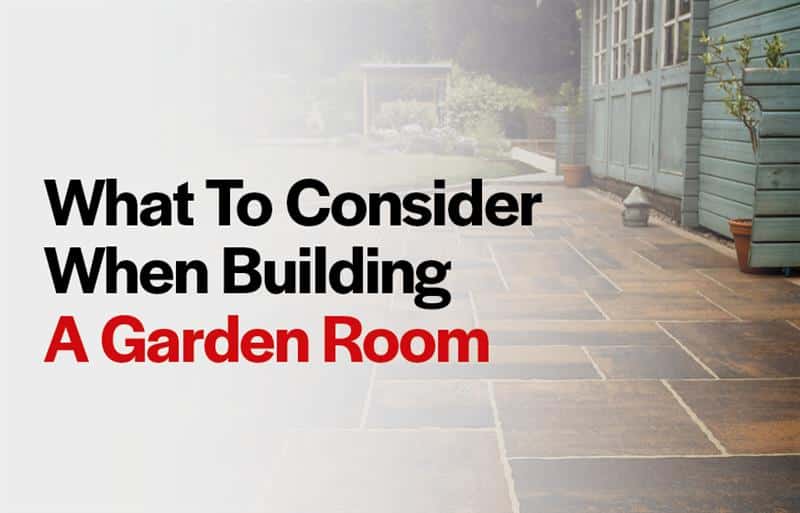
Garden rooms have become a popular way to add space for a home office, kids’ playroom, or hideout. Tobermore’s resident landscape designer, Vanessa Drew, shares five things to consider when building an outdoor room.
Whatever you want a garden room for, its proportions will be determined by the size of your garden – and how much you are willing to spend. Think about the style and appearance you would like your garden room to have. These days, anything from a traditional wooden-clad building to an all-glass box can be achieved.
To create a truly comfortable and usable space, you will need to insulate your garden room and place it on solid foundations to avoid damp problems. The base can be concrete, or a raised wooden frame – which has the added benefit of helping with airflow under the building.
Of course, all of this depends on whether you will need planning permission or not. Thankfully, for most projects where the floor area of the building is less than 15m2, building regulations won’t apply. Always check with your local planning authority.
Positioning your garden room in the right place in your garden is key. Will you be placing it in a sunny or shady place? Think carefully about the direction it faces, too. For example, a glass-fronted garden room that faces south will likely get very hot in the summer months.
You should also consider how your garden room interacts with your house. When you look out onto your garden from your home, would the garden room look attractive?
Something that is a little boring to think about, but an absolute must when planning your garden room is access for building materials and equipment. You may need to consider removing fences or walls to allow access for deliveries and machinery, for example.
If you want your garden room to be truly usable, you will want to have it wired for electricity. It may not seem essential, but at the very least you’ll want some lighting for darker days and evenings. Plug sockets may come in useful if you want wi-fi internet access or simply to be able to vacuum your outdoor room. Be sure to use a qualified electrician to carry out the work.
A big plus for anyone interested in a garden room is the current crop of renewable power options. If you are sustainably minded or, you do not want to dig up your garden to install chunky power cables underground, you may want to consider powering your garden room from an off-grid source, such as solar panels.
You should not need planning permission to install solar panels, but if you live in a conservation area, you will need to double check with your local authority first.
A well-built, sturdy garden room will be able to take the weight of solar panels, but you’d be sensible to get a qualified installer to check before you make a final decision. Solar panels can be a hefty investment, so planning really is key.
When planning your garden room, you should also think carefully about how the building will integrate with your garden. If you simply drop a structure in with no thought to the immediate area around it, there is a risk it could look ‘stuck on’.
A great way to successfully integrate a garden room with your house and garden is to add a path. A physical link like this will help to tie your garden room into its surroundings and draw the eye towards it.
To soften the structure and help to blend it with your garden, think carefully about planting and paving. A patio area outside your garden room can be a great feature and provide useful outdoor space, while further linking the building to your garden. If you don’t know where to start, try browsing our Paving flag patio collections. From contemporary to traditional styles, we have a range of paving flags to suit all budgets and requirements.
You can also take the design process a step further with our Picture It visualisation tool.
Picture It is a free to use, AR visualisation tool from Tobermore, which will help you visualise new paving at your home. Simply open Picture It on your phone, take a photo of your outdoor space and choose your new paving. You can take as many photos as you like, and quickly switch between paving ranges, styles and colours in a single tap.